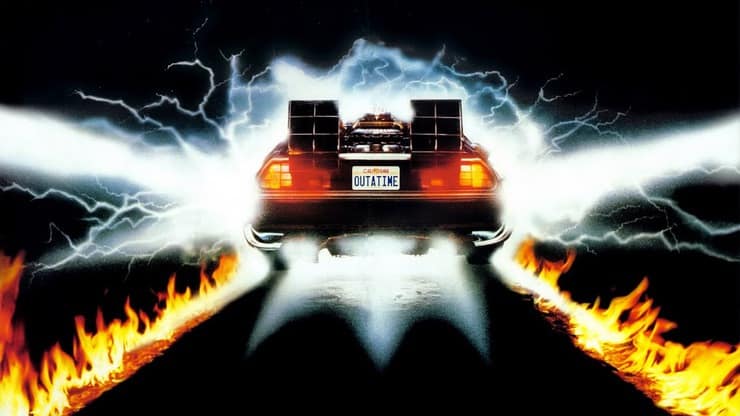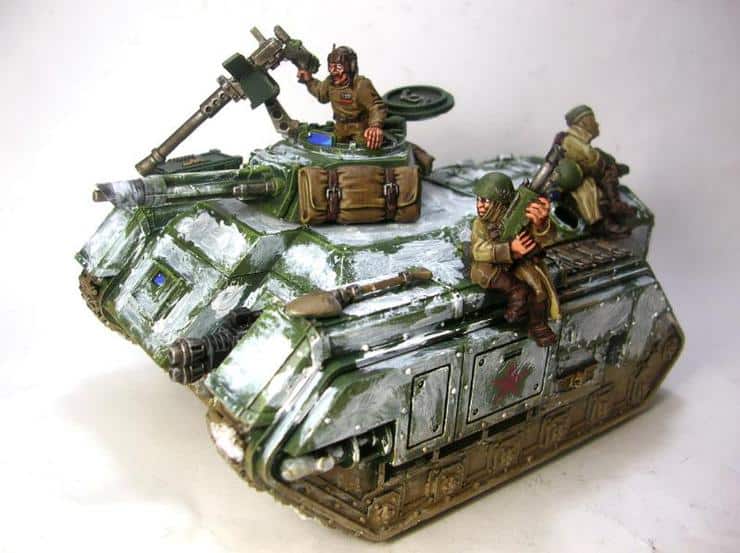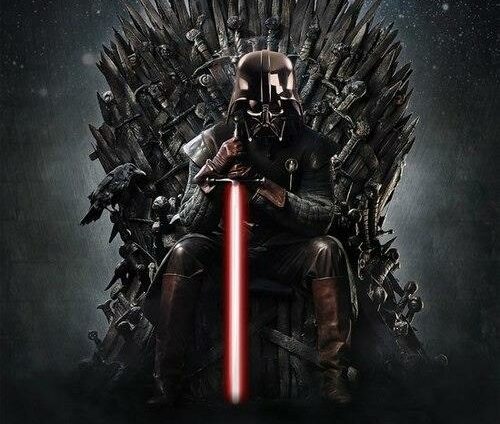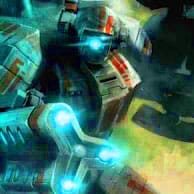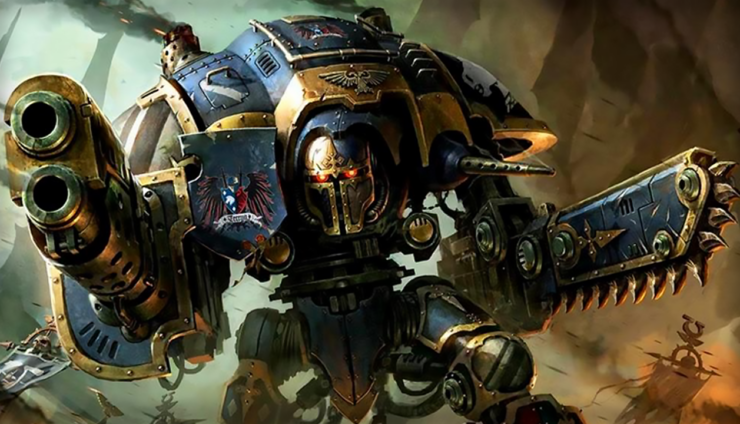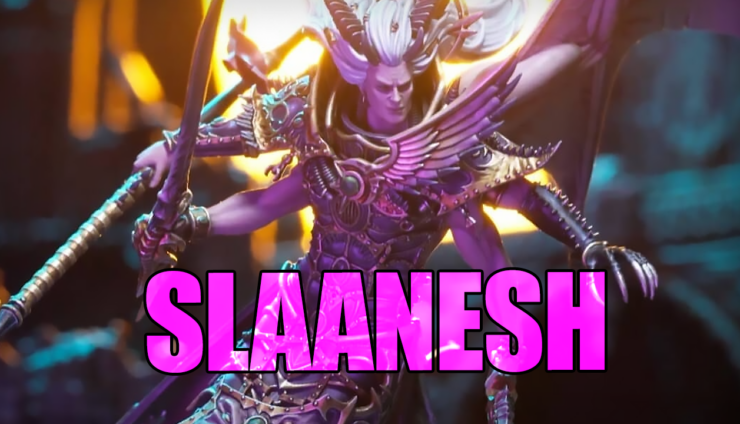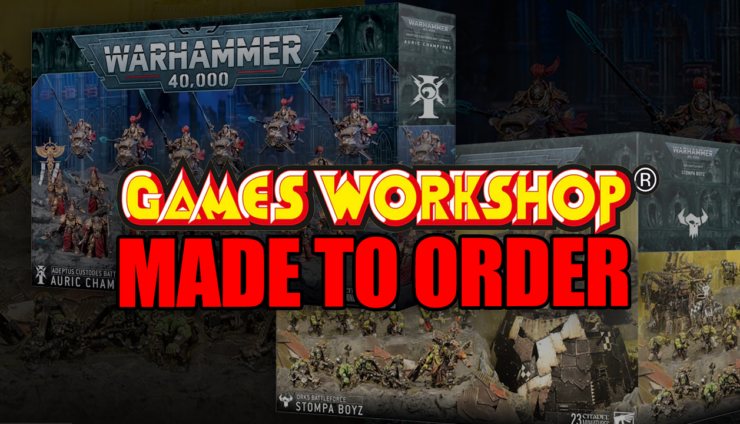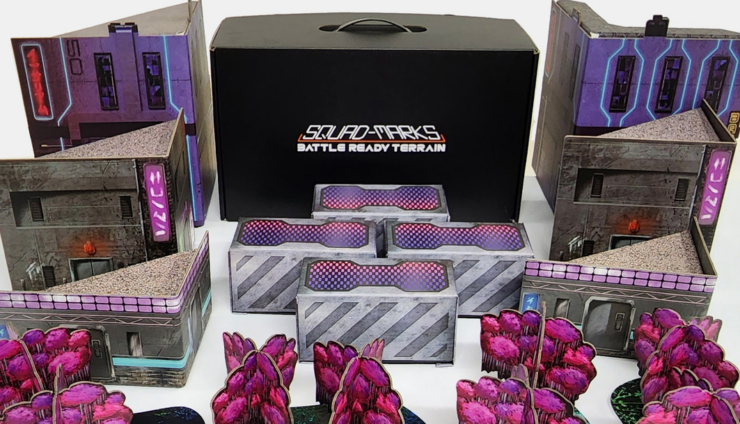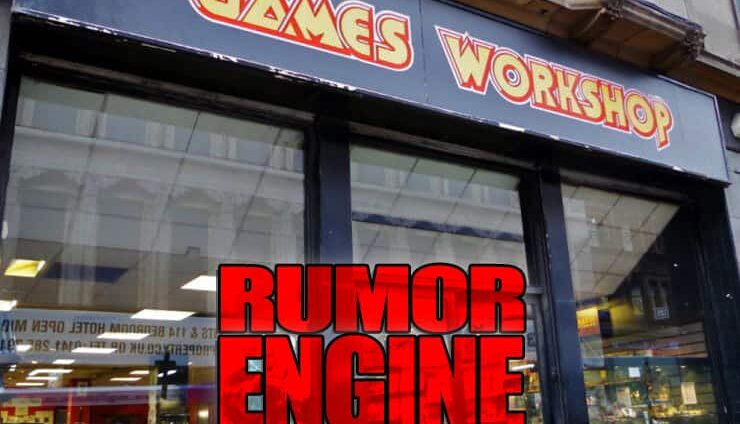Hey internet, its the J Stove again, and you probably haven’t heard of me. That’s not because I’m a hipster though, its because I’m a relatively new contributor to Spikey Bits.
I’ve got a sweet storm eagle I want to show you soon and how I built it, but before we get to that, I want to talk tactics.
Specifically, I want to talk about the assault phase- Not only do I think it isn’t dead as the conventional wisdom on the internet has decided, but I believe it is very much alive and even better than ever.
Before we get into that, let’s take a progressive trip through the past- First, we’ll stop a month or two back, when Reece himself from Frontline Games, a respected and respectable tournament player and regular contributor, posted his own thoughts on the assault phase. He also posted an army list for the new CSM codex that I thought was pretty great- It was loaded to the hilt with aggressive assault units, spawns and maulerfiends. It was a great list for a fast-paced face-punching army that any ork player would be proud to call kunnin’ and brutal.
Now, lets get back in our Delorean and go back further to the glory days of the assault phase- late 3rd edition, and the first black templars codex in the Armageddon codex. For you kids who weren’t with us back in those days, we were undergoing an assault phase renaissance. vehicles in 3rd ed were flimsy, you could kill them with a lucky glance, but the humble rhino was still cheap, and you could jump out of it and still assault. The BT were the Grey Knights of the day- Today, you look at GKs and say “Thats the only marine army where every marine has a power weapon.” Back then, we used to say about the BTs, “That’s the only army where every marine has BP+CCW.” That might sound crazy, but those of us who remember the days of the six marine las/plas tactical squad know how much of a big deal that was.
The armageddon codex BT list gave us the birth of the rhino rush- The archetypal BT list was to put 4-6 rhinos on the table, a LR crusader or 2 if you could fit them (they were hard to kill, 3e was a plasma gun edition) and then just proceed to pick up your little rogue trader baby rhinos and throw them at your opponent. On turn 2 or 3, you would roll up the motorcade, pop the side doors, and then dump anywhere between 40 to 60 close combat marines into your opponent’s lap. That was the first rhino rush.
As time crawled forward, and Imperial Guard players bought more chimeras, (the armag steel legion was the first opportunity for guard to mechanize- in the old 3e guard codex, every guard army was line guard army. Vets weren’t even troops!) We began to see an evolution of the mechanized list. It started out simple enough- Put Templars in a rhino, punch your opponent in the nose, win the game.
By the time we get to 5th edition, the times of the melta gun, and the finest hour of the mech list, the assault phase had fallen off- The new school of mechlists had evolved the idea. It was about mechanized Death Guard and meltavets in chimeras- The new mantra was, “Why get out of the vehicle when it has a perfectly good sunroof?” Assaulting wasn’t good or bad, it just wasn’t a thing anymore. Only Draigo and cheap 4th edition demon princes ever actually assaulted anything.
Now, we hop back in our Delorean and come back to the end times, December 2012. The Mayans are long gone, and we still don’t have hover skateboards and 80s hair. Its a tragic time for all humanity, not just 40k enthusiasts.
GeeDubya has rebalanced the game once again, and the order of the day, according to the internet wisdom, is to put your rhinos back on the shelf and hope 7th edition brings us jetpacks, hovercars, 80s hair, and functioning troop transports. Between the new school of hull points and the inability of troops to assault out of typical enclosed transports without the AV rule, many lament that the assault phase is dead.
Which brings us in a roundabout way back to my long winded argument- The wisdom of the internet is correct, and it is wrong. You see, the old assault phase is dead. The third edition armageddon BT rhino rush is dead. Playing your opponent in the assault phase is very much dead. That much is true, but that’s because we don’t play our opponent in the assault phase anymore, we play the table. The king is dead- Long live the king!
What the mourners are failing to take into account in the new regime of 6th edition is that assault is no longer about punching your opponent. Its about board control. Don’t assault the foe, assault the table. In older editions, we swore by kill points. In 6th edition, its one mission out of 6. The new regime is objectives, and objectives are part of the table game.
The majority of your games in the 6th ed BRB scenario environment (and assuming the tournament environment, if the tournament environment decides to stick to BRB missions, its too early in the edition to say.) are going to be objective grabs. We have Football, capture the flag, and of course, multiple objectives with fast attack scoring, and multiple objectives with heavy support scoring.
Lets assume for the most part that you are going to be playing table control missions- Going for quarters, going for multiple objectives, asserting table dominance. The internet shooting wisdom cube demands that the best possible plan of action is to shoot the hell out of your opponent so that he gets knocked off of his markers, while you bunker down on a fat troop squad in cover on yours.
Theoretically, if we’re going by BRB missions, and I am, you also have some say in where those objectives actually are. The default assumption is to put as many of those objectives in your own backyard as you can, to deny them from your opponent, and that he will do likewise. Then you have a standoff shooting game.
This is where we go back to talking about playing the table. The beauty of the 6th ed deployment map, no matter which one you roll up, is that the game always happens in a 24″ window between you and your opponent. That 24″ corridor is the most significant part of the battlefield, and it is always puts you 24″ from your foe if both players sit units on the starting line.
The objective for the assault army then becomes, “Make my opponent come out and play.” We aren’t playing the foe, we’re playing the table. When it comes to your turn to place objectives, don’t just put objectives where you can get them, put them where they need to be fought over. One should always endeavor to force the foe out of cover, out of his comfort zone, make him work to get the objective that will win him the game. A game where more objectives are in the 24 zone, the “assault corridor” will be more fun, force you and your opponent to both think more, and guarantee that someone has to jump in order to win. Another important thing it does is cheapen your opponent’s reliance on his fortification. By now, everyone is probably a pretty big fan of the aegis line- Its cheap, it generates a ton of cover, and it grants your choice of anti-air firepower or reserve re-rolling. For a static gunline army, it becomes one of the most important purchases for his army. Make him abandon it, or even better, force him to commit to it- If objectives are in the middle, he will struggle with the decision- Should a unit sit inside the aegis and camp their own homebase objective, or should they abandon it to contest another upfield? If you are playing a good, aggressive assault phase, and dominating the board, then neither of these options are fruitful for your opponent.
So you can see, the assault phase doesn’t actually start at the third part of your turn, it starts while you’re still laying out the board. Drill this into your head, because I keep saying it- In 6th edition, we don’t play the enemy army in the assault phase, we play the table.
Now, lets get around to turn 1, and talk about my new favorite models in the game- bikes, beasts, jump monsters, and the prince of them all, the maulerfiend. If you have correctly played the assault in the deployment phase, and your opponent has put units on the starting line to contest midfield objectives in the ‘assault corridor’ then it is very possible your fastest assets will have turn 1 charges, with a little luck, or more appropriately, with the help of your friends, fleet and move through cover. This is something we haven’t seen in a long time in 40k- The turn 1 charge.
Now, this assumes that you have first turn, and that your opponent has infiltrated or scouted models forward where you can get them. Theoretically, its possible for a unit of beasts to hop 12″, roll boxcars on the charge, and cross the whole assault corridor on turn 1. Possible, but we’re not banking on it. It is very likely however, that if he has any out-of-deployment-zone advance assets in the assault corridor, that you’ll be able to get them.
Now, here’s where things get more interesting- If your opponent gets the coveted first turn, and lurches forward into the corridor for the land grab, you will absolutely be guaranteed turn 1 charges. Between 12″ movements, fleet rerolls, and microwaved dice, probability dictates that only the cruel dice gods can (and will) rob you at that point.
At the very least, a well prepared and aggressive assault army will make turn 2 charges across the board, turning the assault corridor into a quagmire.
Now, lets talk about actually killing your opponent, which brings us to the most beautiful part of the 6th edition assault phase… You don’t have to.
Remember your lessons- We aren’t playing the opponent in the 6th ed assault phase, we’re playing the table. Pop quiz- What is the most impassible, immovable, and annoying barrier in the game of 40k? The answer- models locked in combat. Models in combat are a black hole. You can’t shoot into it, you can’t move across it, and they even have magnetic repellant properties- Every model in an assault automatically becomes negatively charged. Models can’t sit on top of other models, and if they aren’t fighting, they scoot 1″ away. This means that for horde players like shoota orks and guard armies, you can literally clog the entire board and force him to sit in his own deployment zone for turns at a time.
Because in the new regime, where only one mission is kill points- casualties are secondary to table control and tying up the foe is just as good as killing him, especially if you can stretch an assault across the corridor so that involved models insure that no one can get near the objective they’re fighting over.
Granted, this is all pretty brainless- Not as brainless as the first decade of the 2000s rhino rush, but still pretty brainless for the assault unit with mobility advantage- cavalry, beast, jump, fleet and move thru cover.
But how do we keep the pressure on, or for that matter, decide we actually want to kill something instead of just lock it down, with models that don’t have a mobility advantage?
Well, I know this is going to sound crazy, but remember, we’re playing the table, not the foe. We come back around to the rhino.
Now, the rhino has been maligned by the 6th ed player, the respectable tournament veteran and the internet wisdom kool-aid drinker alike shun it. (drink my kool-aid instead. Trust me. The seventh gate opens up and you can see the unicorn!) Some folks have given up on it because it can’t assault its passengers, some folks simply because while they still appreciate it, they prefer not to risk the opportunity it grants the foe for first blood.
While I do not disagree that the rhino can be an easy secondary objective grab, I will contest that it is still very much worth its points (of which it costs very little) when we consider its context.
First things first, dominating the assault phase doesn’t necessarily mean that you always have to take the charge. For an aggressive assault army that is commanding the table and the assault corridor, getting charge priority is just icing on the cake. The fact of the matter is, a 2nd or 3rd turn rhino pop that causes the passengers to footslog is still dominant behavior if you can make the opponent charge a unit he would rather not be charged by next turn.
The greatest example of the passive-aggressive table dominator and rhino passenger is the plague marine. With a combi gun on the champion and 2 assault weapons in the squad, a rhino mounted unit of plague marines is a unit that no opponent ever wants to see enjoy their shooting phase. If you get a rhino full of PMs halfway up the table, the rhino has already done its job. Between emergency disembarks and the pressure your opponent must apply on the unit to neutralize it, that PM squad is exactly where it needs to be.
What makes PMs really shine as rhino passengers is their legendary durability and defensive grenades. You can coerce a foe into charging them, simply to avoid getting sprayed by their plasma/melta guns, and then you can rob them of that charge with your blight grenades. Its a no-win solution for your foe. He’s now locked a unit into combat with the toughest marine in the game. They’ll be in that fight until turn 6.
Granted, the plague marine is the best man for the job, but that doesn’t mean that more humble, less stalwart marines can do it. Even normal CSMs or grey hunters can become a very real threat when climbing out of a rhino wreck, and they will dictate your opponent’s shooting- He either removes the threat and dedicates fire to them instead of shooting something else, he charges it, which you were fine with, or he allows you to run rampant across his half of the table with plasma/melta guns and melta bombs. The point is, if even if you left the rhino stalled out in a ditch, even if that unit is shot to pieces after getting out, as long as it crossed the assault corridor and pinned your opponent into his own deployment zone for a turn, it did its job.
The rhino, while no longer the incredible assault workhorse it once was at its zenth, is still an effective and mobile tool for applying pressure when we consider the context of assaulting the table and not the opponent. I have personally won more games because rhinos put men where I needed them than I have lost because they gave up first blood.
Now for my last point, lets talk about off-table assets. Reserves. Some of your hardest hitting models, often fliers and deep strikers, terminators, stormbirdies of all kinds, the ubiquitous vendetta or the necron pastry rely upon late game intervention to make their presence felt. Assets that arrive on turn 2 via reserve flying or deep striking will be assaulting on turn 3. This is of course making the natural assumption that the dice gods do not brick your reserve rolls, or even better, that you are a heartless cheater with loaded dice.
For the terminator, the flyer, the reservist of all kinds, the arrival turn is the most dangerous turn in the game. Unable to assault and only defend themselves by shooting, the arrival turn is when the opponent will set himself up to destroy them without reprisal.
However, if you are assaulting the table, filling the corridor, and playing the phase properly, this will be impossible for your foe. The terminators can land behind an existing quagmire of fighting, leisurely stroll into their scheduled charge on turn 3, and end it. Even GK Stormravens and Storm Eagles (Blood angels cheat and have skies of blood) can drop into hover to let the kids off at the pool, before taking to the air again regain their flyer immunities.
Turn 3 becomes the magic turn on the assault schedule. Turn 3 is where we actually go back to the BT Rhino Rush- We finish playing the table, now we’re actually trying to kill people!
And that friends, with this modest conclusion, because I’ve already written an entire essay and nobody wants to read this anymore, is the assault phase in 6th edition. Pay attention to your table distances. Respect the corridor. Make your opponent play the midfield, and then lock him into it with fast, never-ending midfield hand to hand combat. Distance and threat range are the new gods of the assault phase, the old gods- power weapons, infinite sweeping advances, and rhino rushes are gone. Use your deployment phase to insure that the game is played in the assault corridor, and then assault the table, not the foe. Follow these steps, and when you win, tell them Reece sent you. (Because nobody is gonna believe I sent you. I play in the podunk little GW in San Pedro every saturday)
And if it doesn’t work, first blame your dice. Then blame me. Just make sure you never blame yourself, because there’s nothing worse than an opponent who learns from his mistakes. Cheap wins are still wins when you’re working for league points, baby!

